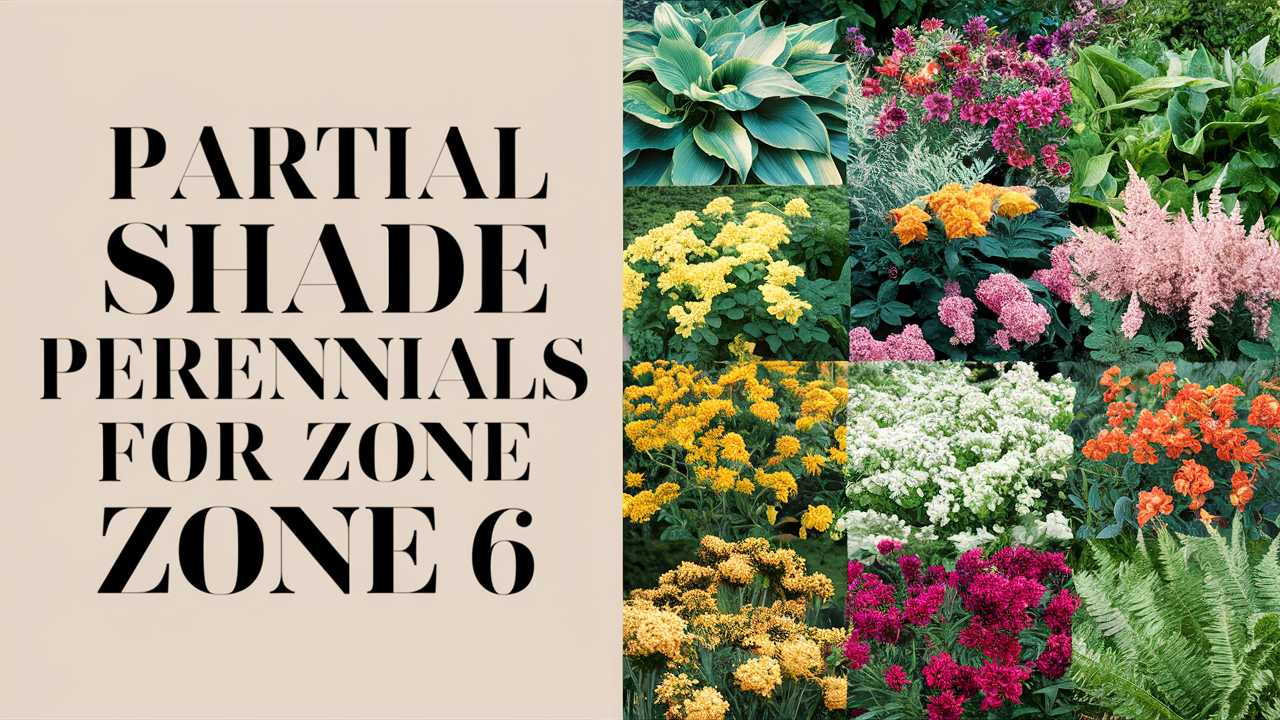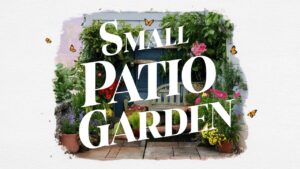Creating a garden in Zone 6, where winters can be cold yet the seasons offer varied beauty, opens up a world of possibilities. One of the key considerations for any gardener is light. While full sun gardens boast dazzling flowers and hearty veggies, many of us manage spaces cloaked in partial shade.
Fortunately, this doesn’t need to be a limitation. The right selection of perennials can thrive in these conditions, adding vibrancy to any shady nook. Let’s explore some compelling options that excel in partial shade in Zone 6.
Bleeding Heart
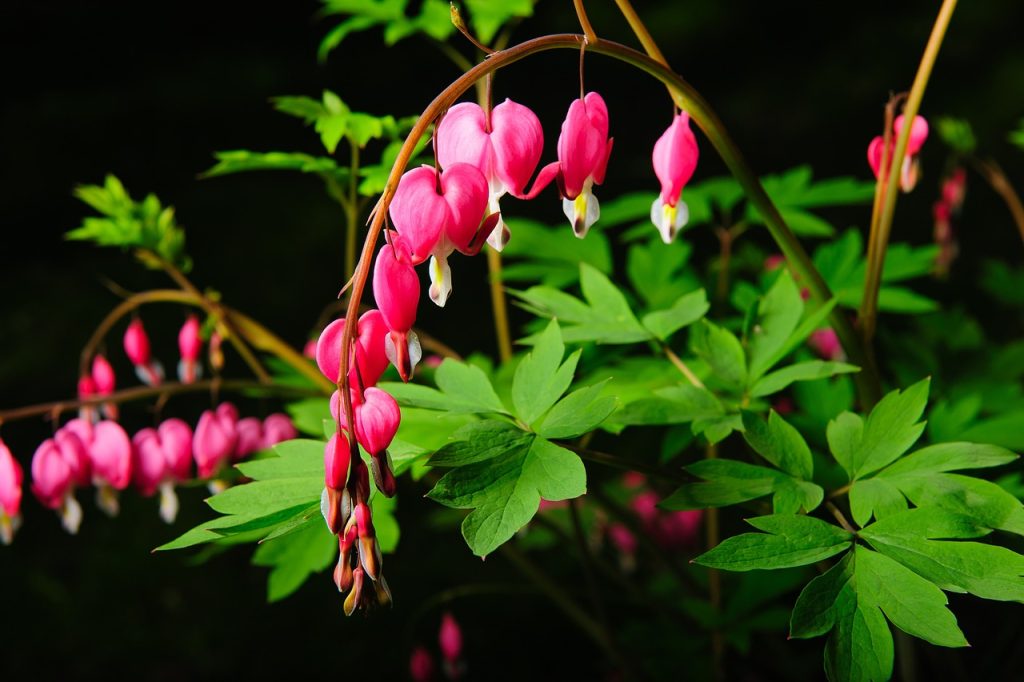
Bleeding Hearts, or Dicentra spectabilis, are enchanting perennials that bring an air of whimsy to any garden. Their delicate, heart-shaped blossoms dangle elegantly from arching stems in spring, creating a stunning visual display. The flowers come in shades of pink and white, making them perfect for a romantic garden setting.
Ideal for zones 3 to 9, these plants thrive in moist, well-drained soil and prefer humus-rich environments. They enjoy a little morning sun but ideally flourish in partial shade. With their unique shape and soft green foliage, Bleeding Hearts are excellent for planting alongside ferns or in cottage gardens. As they fade in late spring, they still provide lush foliage, making them a delightful companion for other summer bloomers.
Columbine
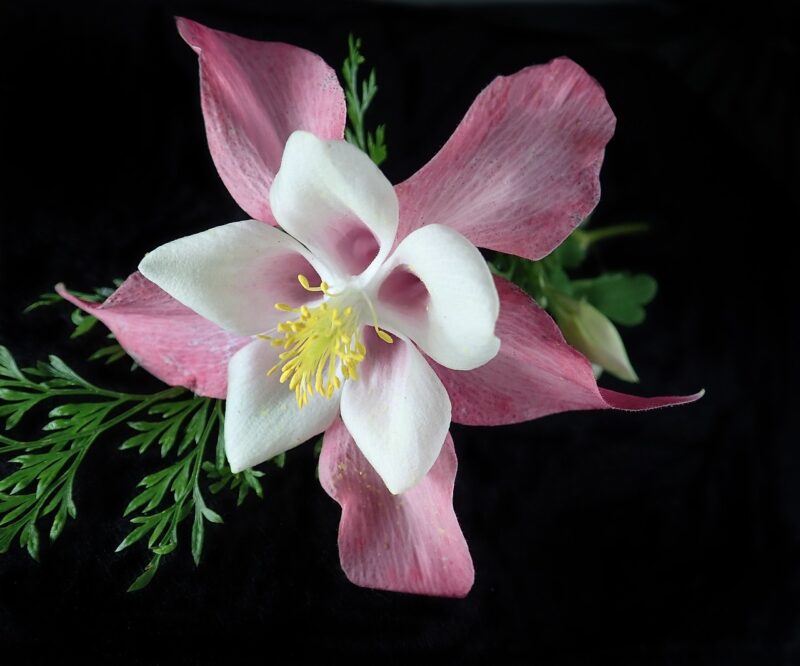
Columbine (Aquilegia) are another charming addition to a partial shade garden. Renowned for their unique, spurred flowers that come in various colors – from deep blues to sunny yellows – they are delightful and versatile. Their airy foliage creates an ethereal quality, making them look lovely even when not in bloom.
Most species of Columbine thrive in partial shade and adapt well to a range of soil types, although they prefer well-drained, fertile soil. Ideal for Zones 3 through 9, these perennials attract hummingbirds and other pollinators, enhancing the liveliness of your garden. Plant them in clusters for a vibrant display, and don’t hesitate to mix different colors for a stunning contrast.
Coral Bells
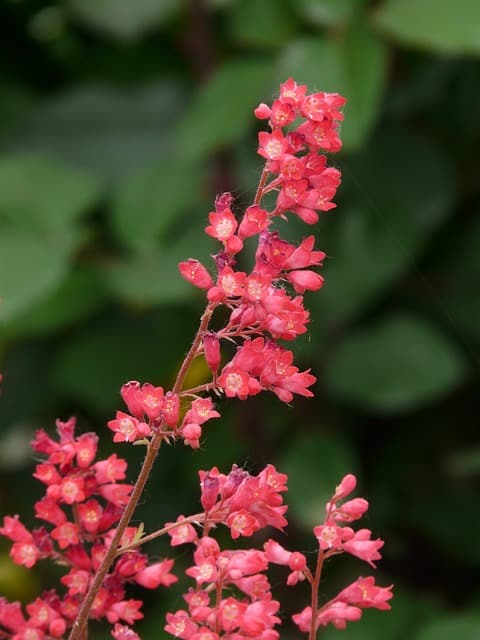
Coral Bells (Heuchera) are a must-have in your partial shade garden. With an impressive range of foliage colors – from lime green to deep burgundy – these plants bring year-round interest, even when they aren’t in bloom. The delicate spikes of tiny bell-shaped flowers that rise above the leaves in late spring add an additional layer of beauty.
Coral Bells thrive in Zone 3-9 and prefer well-drained soil that retains some moisture. They’re resilient and can tolerate various light conditions but appreciate those filtered through trees or structures. By mixing various cultivars, you’ll create a vibrant tapestry of colors and textures, perfect for captivating onlookers throughout the seasons.
Corydalis
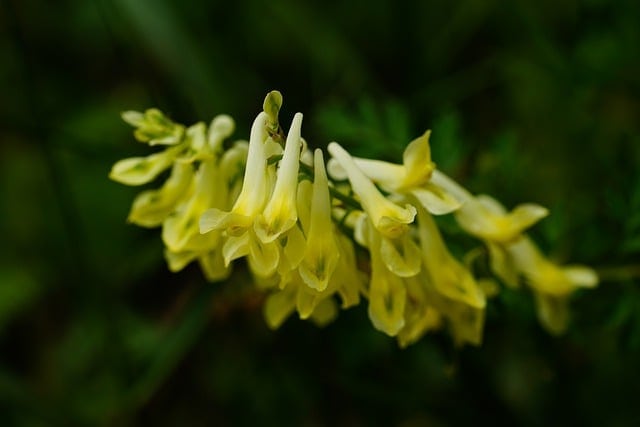
Corydalis (Corydalis lutea) is one of those lesser-known gems that are perfect for partial shade environments. Often overlooked, these perennials boast feathery, fern-like foliage and charming yellow, tubular flowers that create a soft, romantic atmosphere. They are particularly hardy, thriving in Zones 3-9 and can even tolerate poorer soils.
This plant flourishes in shaded areas, making it ideal for woodland gardens. It serves as an attractive ground cover, suppressing weeds while enhancing the garden’s aesthetics. Corydalis not only captivates the eyes; it also attracts bees and butterflies, contributing to the ecosystem’s richness.
Country & Western Astilbe
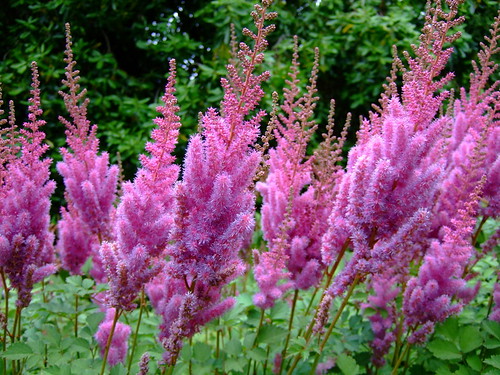
With a name as catchy as its beauty, the Country & Western Astilbe (Astilbe chinensis) is perfect for filling those partially shaded spots with vibrancy. Known for their plume-like flowers in shades ranging from rosy pink to deep purple, Astilbe creates a dramatic focal point in your garden during early summer. Their lush, fern-like foliage adds texture and depth, making them visually striking even after the blooms have faded.
Astilbe prefers moist soil and thrives in well-drained environments, making them ideal for marshy areas or near water features. Zones 4-8 accommodate these plants well; however, they’ll do just fine in the milder microclimate of Zone 6. Group them together for a more substantial visual impact, and don’t shy away from shaping the soil around their base into small hills for added drama!
Creeping Myrtle
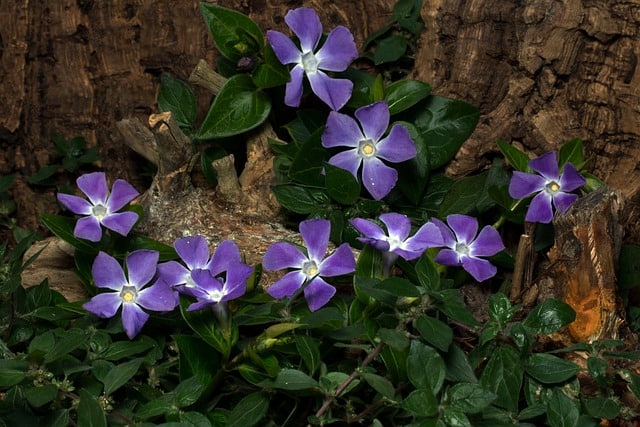
Creeping Myrtle, or Vinca minor, is a beautiful, low-growing perennial ideal for ground cover in partial shade. Its lush, green leaves are complemented by stunning violet-blue flowers that bloom in spring, adding color and texture to the landscape. This hardy plant is perfect for filling in those bare spots and can tolerate any garden condition.
This perennial thrives in Zones 4-9 and prefers well-drained soil, although it can adapt to many types. Creeping Myrtle is also known for its ability to suppress weeds, making it a gardener’s ally. Its trailing nature allows it to cascade beautifully over rocks or along pathways, creating a charming and welcoming atmosphere.
English Daisies
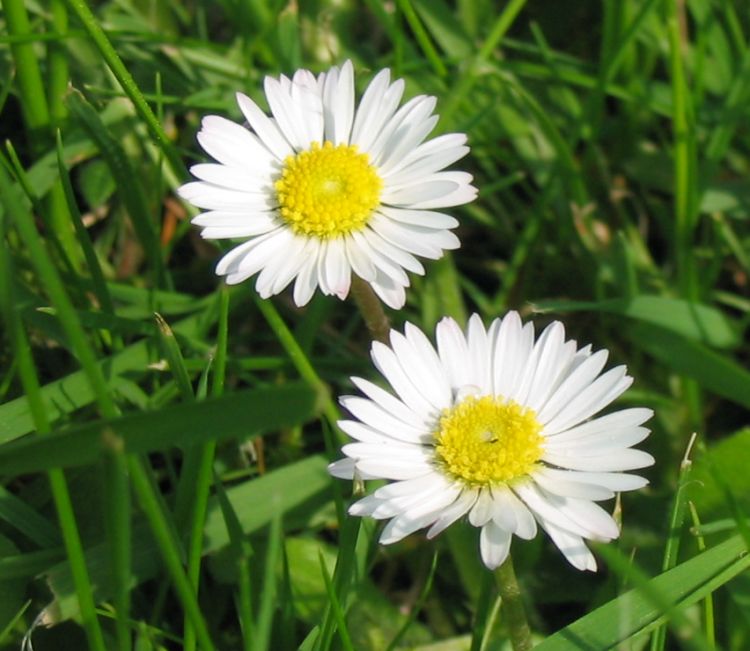
For those wishing to add a classic touch to their gardens, look no further than English Daisies (Bellis perennis). These cheerful blooms bring a sense of nostalgia and joy. Known for their round, white petals surrounding a yellow center, they are perfect for informal borders or cottage gardens. English Daisies bloom in early spring and can sometimes flower again in the fall, providing beauty for several months.
These charming perennials prefer moist, well-drained soil and will thrive in partial shade, making them excellent companions for ferns or shade-loving bulbs. Zones 3 through 8 are suitable for their growth, and using them as a ground cover will give your garden a soft, inviting feel, harkening back to the classic, idyllic English gardens.
Ferns
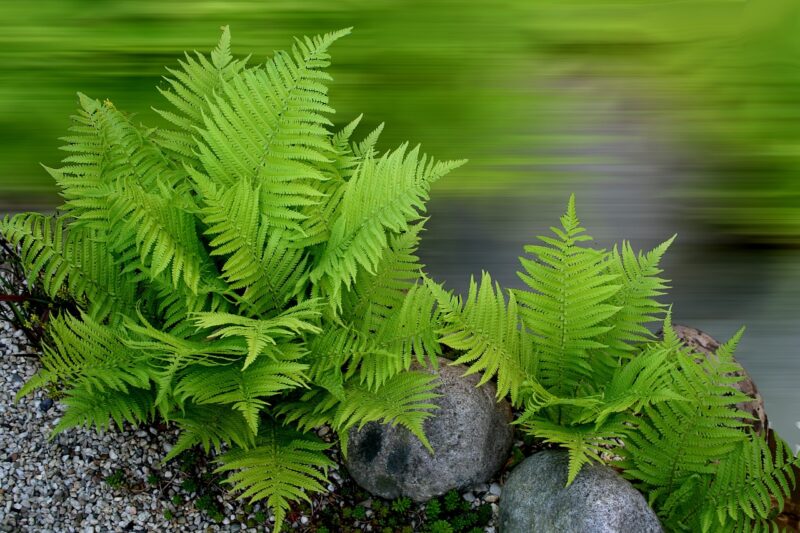
Ferns are the ultimate foliage plants for shaded environments, providing texture and form to any garden. With hundreds of species available, they work uniquely to fill in gaps and offer a lush backdrop. For gardeners in Zone 6, options like the Ostrich Fern (Matteuccia struthiopteris) or the Lady Fern (Athyrium filix-femina) are particularly delightful.
These perennials thrive in rich, moist, well-drained soil and prefer dappled sunlight. They can be used effectively as borders, ground cover, or as a backdrop for flower beds, lending an air of sophistication to any landscape. Their chunky, vibrant green fronds contrast strikingly with flowering plants and create a soothing environment, inviting wildlife into your garden.
Foam Flowers
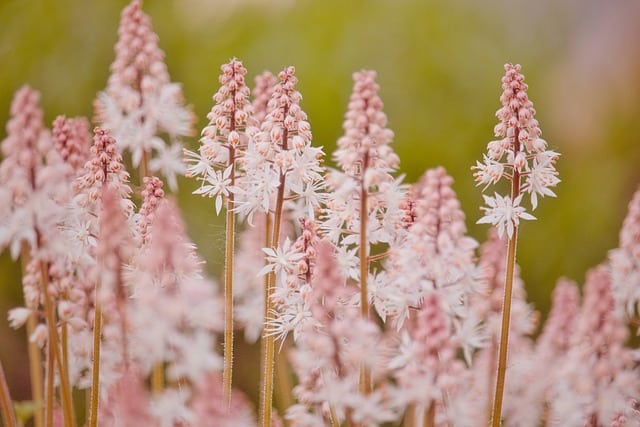
Foam Flowers (Tiarella cordifolia) are yet another fantastic option for those shaded spaces. Known for their delicate spikes of white to pink flowers that rise above the lush, heart-shaped leaves, Foam Flowers create an enchanting atmosphere. They bloom in spring and provide a beautiful focal point without overwhelming other plants in your garden.
These perennials prefer consistently moist environments, thriving in well-drained, rich soil, which aligns well with other shade-loving companions. Foam Flowers are typically found in Zones 3-9, making them ideal for your Zone 6 garden. They make excellent ground cover due to their spreading habit, forming a soft carpet that looks attractive year-round.
Hosta
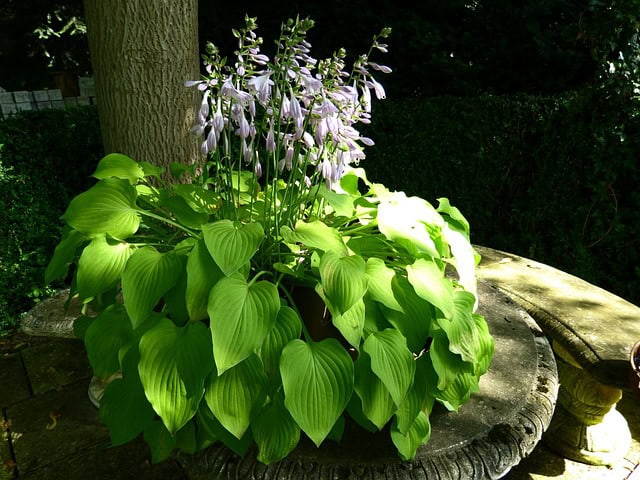
Hostas are a staple for any shade garden and come in countless varieties, each with its own unique leaf shape, size, and color. From deep greens to striking golds and blues, Hostas provide impressive foliage that can be used to brighten up shaded areas. Their elegant blooms, usually lavender or white, emerge in summer, adding an elegant touch to the lush foliage.
Thriving in Zones 3 through 9, Hostas prefer moist and rich soil, making them ideal for shaded areas with good humidity. They are excellent companions to other shade favorites and can be used as borders, ground cover, or focal points in more traditional landscape designs. By mixing various Hosta varieties, you can create a riot of color and texture, bringing a lush, vibrant effect to your garden.
Brunnera
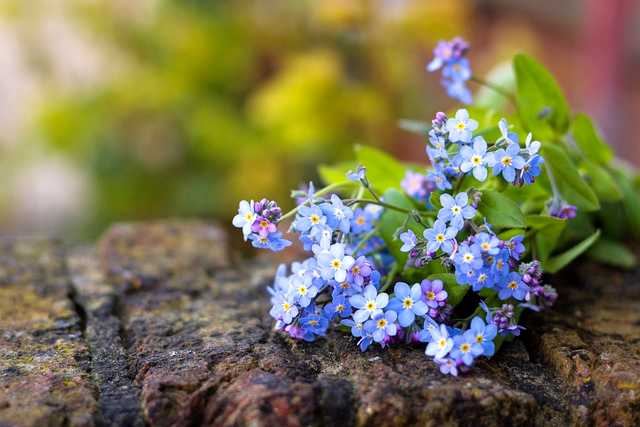
Brunnera (Brunnera macrophylla), often known as Siberian Bugloss, is a lovely perennial that thrives in partial shade and offers a striking visual with its heart-shaped leaves. The small, sky-blue flowers that appear in early spring rival those of forget-me-nots and create a lovely cascade of color.
Brunnera flourishes in rich, moist, well-drained soil and is perfect for mixed borders or shady corners of your garden. Zones 3-8 accommodate this perennial well, making it an ideal fit for Zone 6. Known for its resistance to deer and rabbits, Brunnera makes a robust and luxurious addition, harmonizing perfectly with other spring bloomers.
Japanese Spurge
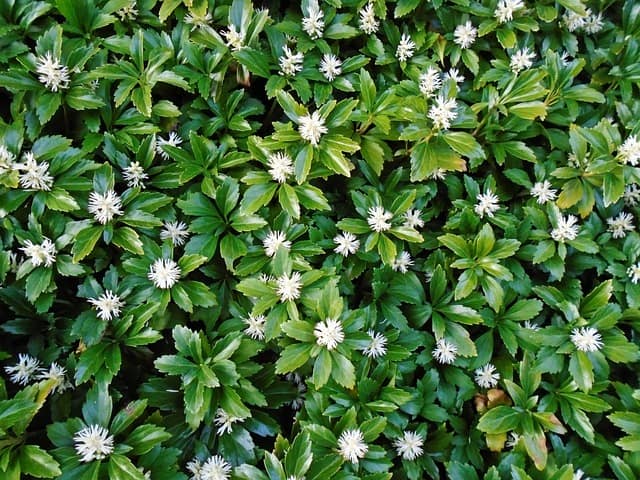
Japanese Spurge (Pachysandra terminalis) is a versatile ground cover that can thrive in shaded areas. With evergreen leaves and small, white flower spikes in spring, this lovely plant adds interest year-round. Its dense growth habit allows it to effectively suppress weeds, making it a practical choice for those shaded spots under trees or in flower beds.
Japanese Spurge thrives in USDA zones 5–9 and appreciates well-drained, rich soils. It works wonderfully as an underplanting for taller perennials and offers a lovely contrast to more flowering plants. Its lush foliage provides structure and helps create a natural, layered look in shady parts of your garden.
Japanese Toad Lily
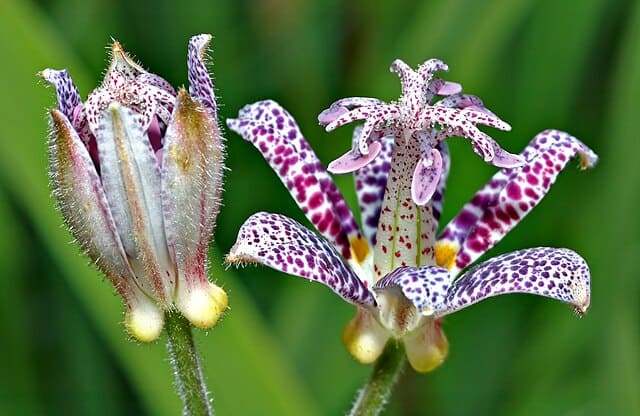
For a touch of exotic flair, consider the Japanese Toad Lily (Tricyrtis). Its unique spotted flowers bloom in late summer to fall, adding a splash of color when many other plants are starting to fade. This perennial thrives in partial shade and appreciates consistent moisture, making it perfect for moist woodland gardens.
Adaptable to various soil types, Japanese Toad Lily flourishes in Zones 4-9. Its distinctive appearance makes it a conversation starter; the blooms look stunning when planted near other late-blooming perennials. Combining it with ferns or foliage plants creates a lush, serene setting, enhancing the tropical feel of your garden.
Lenten Rose
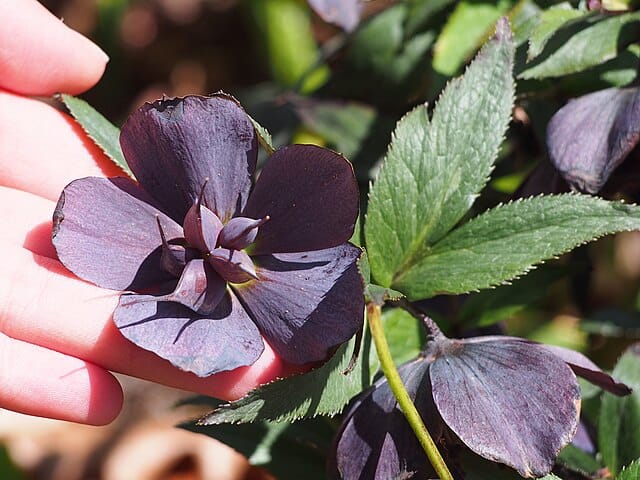
Lenten Rose (Helleborus orientalis) is a remarkable early spring bloomer that deserves a space in your garden. Often blooming even before winter has entirely released its grasp, these hardy perennials possess unique, nodding flowers in hues from deep purples to soft whites. Their leathery, evergreen leaves provide visual interest even in the cold months.
Thriving in Zones 4-9, Lenten Roses prefer well-drained soil and partial to full shade. They’re excellent for planting under trees or in darker corners of your landscape. The subtle beauty of their unique blossoms, coupled with their resilience, makes them a prized addition for those seeking to create interest during the grey days of early spring.
Leopard’s Bane
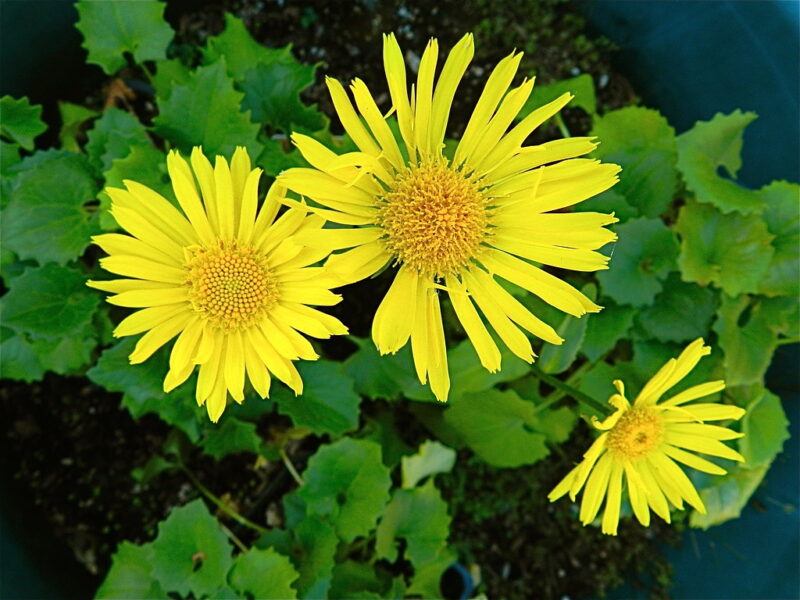
Leopard’s Bane (Doronicum spp.) is an enchanting choice for those who wish to wake their gardens with a burst of sunshine. This perennial produces daisy-like yellow flowers in early spring, making it one of the first plants to bloom in the season. Its vibrant yellow blossoms create a stunning contrast against dark green foliage.
Leopard’s Bane thrives in partial shade and prefers moist, well-drained soil. Zones 3-8 provide the ideal environment for its growth. Use them as a cheerful contrast to darker foliage plants like Hosta or ferns, creating a garden that feels lively and welcoming, especially as it wakes with the warmth of spring.
Lungwort

Lungwort (Pulmonaria), with its speckled foliage and charming flowers, is an excellent pick for those looking to enhance their shaded spaces. The foliage emerges with spots of silver, providing interest even before the flowers bloom. Lungwort typically features clusters of blue, pink, or white flowers that create a lovely tapestry of color in early spring.
Thriving in Zones 4-9, Lungwort prefers moist, well-drained soil and can tolerate a variety of conditions. Their early blooms often provide nectar for bees when few other flowers are out; hence, they contribute to local ecosystems. Using them as ground cover positions them perfectly beneath trees or within mixed perennial borders.
Indian Pink
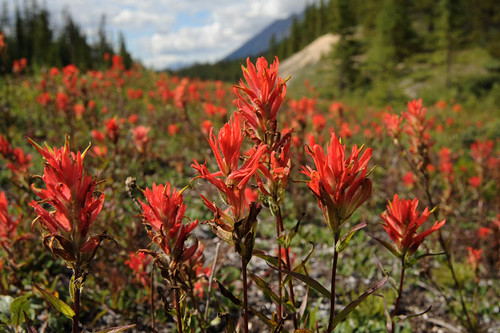
Indian Pink (Spigelia marilandica) is a striking perennial that adds a unique flair to any shade garden. Known for its tubular red flowers that attract hummingbirds, Indian Pink blooms in mid-spring and brings bursts of color just when the garden begins to awaken. Their glossy green foliage creates a lovely backdrop throughout the year.
This plant thrives in Zones 4-9 and prefers well-drained, moisture-retentive soil. It works beautifully in bold groupings, making a statement in a partially shaded area. Indian Pink pairs wonderfully with ferns and other woodland plants, helping to create a lush, vibrant refuge for wildlife and gardeners alike.
Sun King Aralia
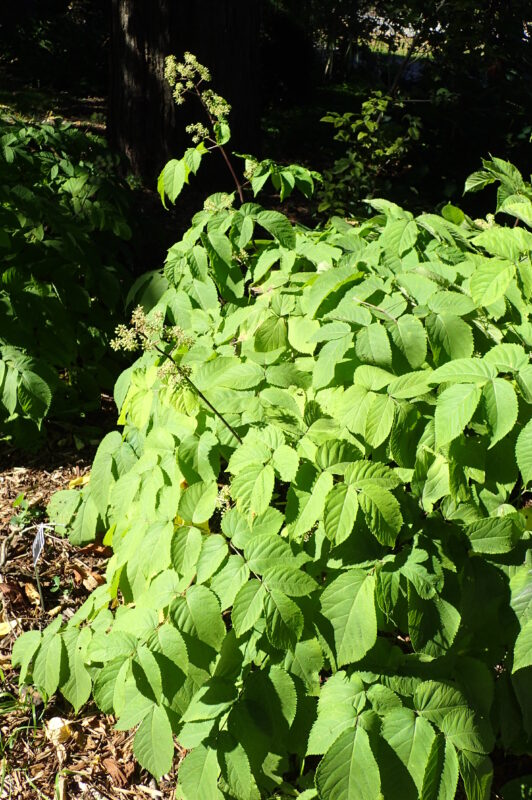
Sun King Aralia (Aralia cordata) is a captivating choice for a shady landscape with its broad, bright green foliage that creates a tropical feel. Known for its impressive leaf size, this perennial creates dramatic shapes in the garden while still being surprisingly low maintenance.
Thriving in Zones 4-9, Sun King loves moist, well-drained soil and can also tolerate dry conditions once established. Use them to create a bold backdrop or as a focal point among lighter foliage plants, and watch how they transform your shaded areas into a lush paradise.
Wind Flower
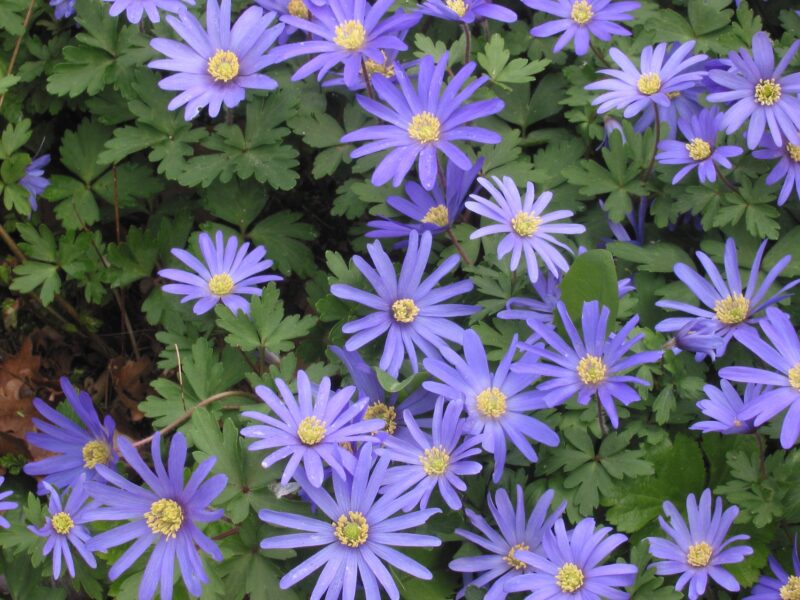
Last but not least, the Wind Flower (Anemone nemorosa) is perfect for adding charm to your shady garden nooks. Blooming in early spring, the white or lilac flowers create a serene atmosphere as they sway gently in the breeze. These delicate bloomers can add a dreamy element to your garden.
This perennial prefers moist, well-drained soil and thrives in Zones 3-8. They’re fantastic for naturalizing under trees or in woodland gardens, creating an enchanting effect as they spread in time. Combining Wind Flowers with ferns or other foliage plants can create a tranquil, woodland-inspired retreat that invites relaxation.


